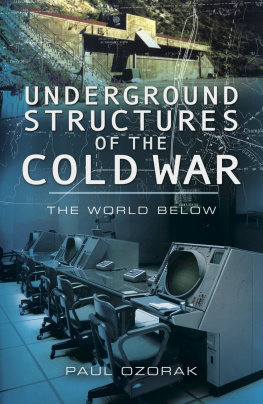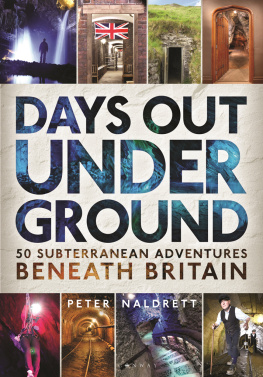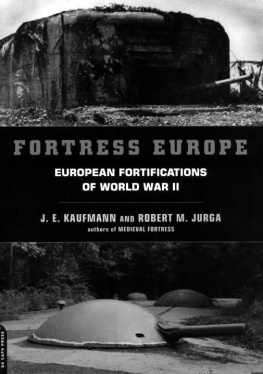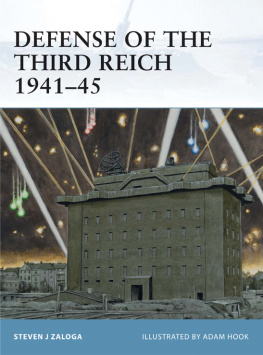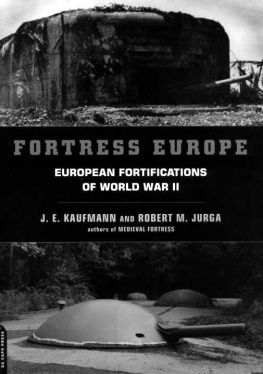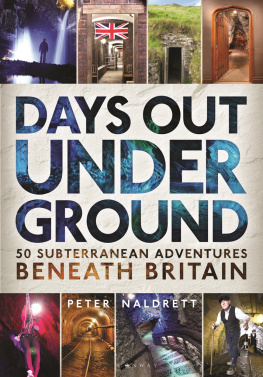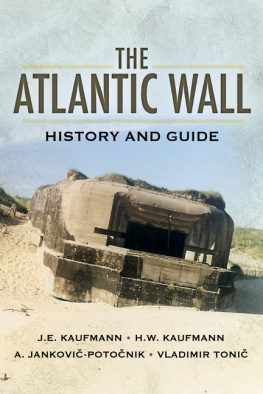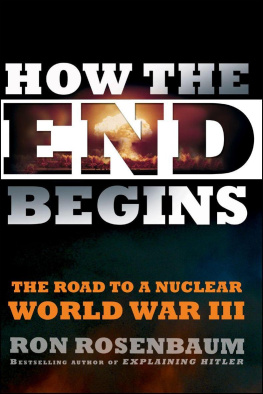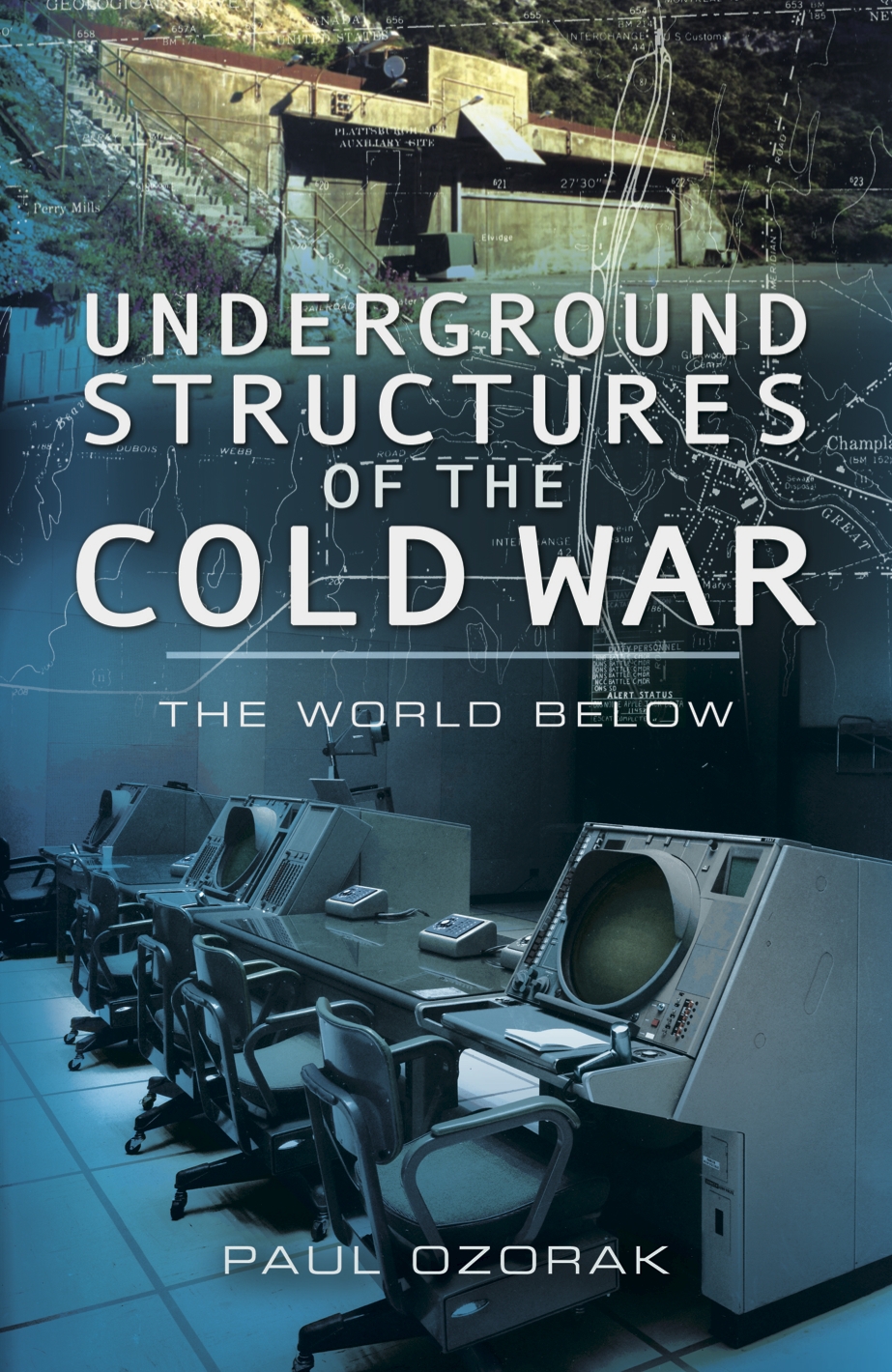Acknowledgments
In addition to the various media I have mentioned in my introduction, some of what I have learned has come from individuals whom Ive met on my many trips. Some of those persons have imparted knowledge to me that was not available from the Internet, and to them I tip my hat. Others have been nice enough to drive me to places not accessible by public transport, or have made my trips less costly by sheltering me. Among these individuals, I thank David and Andrea in London, Mike G. in Manchester, along with Rupert Allason, Dan McKenzie, James Fox and Paul Stokes of the United Kingdom. I also thank John Bex of Alconbury Developments. In Poland, I am grateful to Marta and Pawel of Wroclaw, Joanna Lamparska, Professor Janusz Miniewicz and Tomas. In Estonia, Mati un, Jiri and Francoise were of great help. I also thank the Estonian Police for allowing a visit of the former KGB bunker by Lake Paunkla. In Germany, there was Werner Bochert of Zossen, Claus Rhling of Urft, Burkhard Baumgartner of Kerkel, Tomas of Eichental and Frank Tausche and Diethelm Markowski of the Finow air museum. In Switzerland, it was Jean-Christophe Moret and Rudolf Steinmann, the former who takes care of Battery A46 at Martigny, and the latter who gave me a tour of the Bloodhound missile site near Zug. Liz Laan of Ottawa was kind enough to proof-read the Canadian chapter, and John Clearwater, also of Ottawa, provided valuable assistance, as did Dave Peters and Bob Borden of the Diefenbunker museum. Architect David Warne of Toronto also helped, as did the Newmarket Historical Society and Orianna of Aurora. I am also grateful to Warrant Officer Doug Powell of the Canadian Forces for allowing a tour of the only remaining Cold War bunker in operation in Canada. In Sweden, I must thank Lars Hansson of Nykping for driving me around his area, and volunteers at the Sve air museum for giving me a peek inside the former air control centre there. I also thank Sven Scheiderbauer in Norway, along with acquaintances from Russia, China, Spain and Sweden. In France, I thank Stphane Brard of the Defence Historical Service in the splendid Chateau de Vincennes in Paris.
In the United States, I thank Mark Morgan, Charlie Simpson of the Association of Air Force Missileers, Gary Powers Jr, Pavel Podvig and Bob Norris of the Natural Resources Defense Council. (In fact, anyone interested in learning more about nuclear weapons and targeting is encouraged to read the NRDCs The US Nuclear War Plan. A Time for Change , which he co-wrote with McKinzie, Cochran and Arkin.) I am also grateful to Joe Kaufman from Texas for opening a door hitherto closed to me. Muchas gracias JK.
Where governments are concerned, very few provided any kind of help, but I must thank at least SAC Historian Jerry Martin, Kay Goss and Catherine Light of FEMA for help provided years ago, and Karin Hirsbrunner of the Swiss Office of Civil Protection. I am also grateful to the Library of Congress for allowing the reproduction of missile site-related photos.
The lack of co-operation from the various governments (along with NATO) that I have just mentioned came from all sides. STRATCOM would not confirm to me whether the Major Attack Options that I describe in the American chapter are still called as such. FEMA still will not say anything about Mount Weather, even though everyone and their grandmothers know whats there, although it has provided information to me on the underground Federal Regional Centers. And the British government will not release a harmless photo of a blast door at RAF Neatishead, nor will it say anything about its long-closed nuclear weapons depots in Germany. I expected this kind of secrecy from the Russians and the Chinese, not from the British and Americans. Always in the name of national security, they say.
Another problem I have had to deal with is censorship. For years, one had a birds eye view of the NATO bunker outside Lisbon on the Internet, until someone covered it. Similarly, one could also see the location of the Polish bunker in the Pyry forest in Warsaw on the net relatively clearly until recently, but now that particular part of Pyry is blurred out. Also, the French government has blurred out satellite images of its active air bases. I also remember that, years ago, photos of the SAC bunker at Barksdale Air Force Base in Louisiana were available on ebay, but the photos soon mysteriously disappeared. I doubt very, very much if any of this would have really hurt national security.
APPENDIX ACanadian Bunkers
There were two types of Canadian bunkers: a relocation site for politicians, military staff and civilian personnel, and a transmitter station for Army radio technicians. The two bunkers were always twinned and were always located on military properties. In Canada, large properties are called Canadian Forces Bases (CFBs) and smaller sites, Canadian Forces Stations (CFSs). The American analogies are Air Force Bases and Air Force Stations. The national bunker was at CFS Carp outside Ottawa, and its associated transmitter site, called CFS Carp-Richardson Detachment, was outside Perth, Ontario.
| Province | Main Bunker Location | Transmitter Station |
|---|
| Alberta | CFB Penhold | Penhold |
| British Columbia | Camp Nanaimo | Nanoose Bay |
| Manitoba | CFB Shilo | Camp Hughes |
| Nova Scotia | CFS Debert | Great Village |
| Ontario | CFS Carp | Perth |
| Ontario | CFB Borden | Edenvale |
| Quebec | CFB Valcartier | St-Raymond |
APPENDIX BChinese Air Bases with Mountain Hangars
The following is a list of Chinese air bases with mountain hangars. These are characterized by very long taxi strips that lead away from the main runways.
| Location | Province or Area | Comments |
|---|
| Anqing | Anhui | North of the city |
| Chifeng | Inner Mongolia | Nearest city is Ulanhad |
| Datangshan | Beijing | The hangar is now the China Aviation Museum. The rest of the base is still active |
| Feidong | Anhui | Near the town of Shitang |
| Jinzhou | Liaoning |
| Le Dong | Hainan Island | Has very long runways |
| Qingyishanzhen | Liaoning | Outside the city of Kuan Dian. No longer used |
| Yantai | Shandong | May no longer be used |
| Yinchuan | Ningxia | West of the city |
| Yiwu | Zhejiang | Northeast of Jinhua |
| Yongningzhen | Beijing | North of Beijing |
APPENDIX CChinese Second Artillery Corps Order-of-Battle
The Corps consists of a headquarters and six major bases (jidi) commanded by Major-Generals. Each base has two or three missile brigades (l) that are called in Chinese Basic Combat units (jiben zuozhan danwei) and that are run by Colonels. Brigades are made up of Basic Firepower Units (jiben huoli danwei), known in the West as battalions. Each battalion has six or nine missiles. The SAC is thought to have about 100 missiles.
During a war, communications of launch orders would come from the Chairman of the Central Military Commissionprobably from his command centre under Yuquan Mountain in western Beijingand proceed to the PLAs Central Emergency Command Centre under Xi Mountain in Beijing, to SAC HQ, to a base, brigade and battalion. The SAC uses the same two-man rule to verify launch orders and to turn the launch keys (as in the United States and Russia). Orders pass through microwave, high-frequency radio and landline systems. The messages are encrypted.

